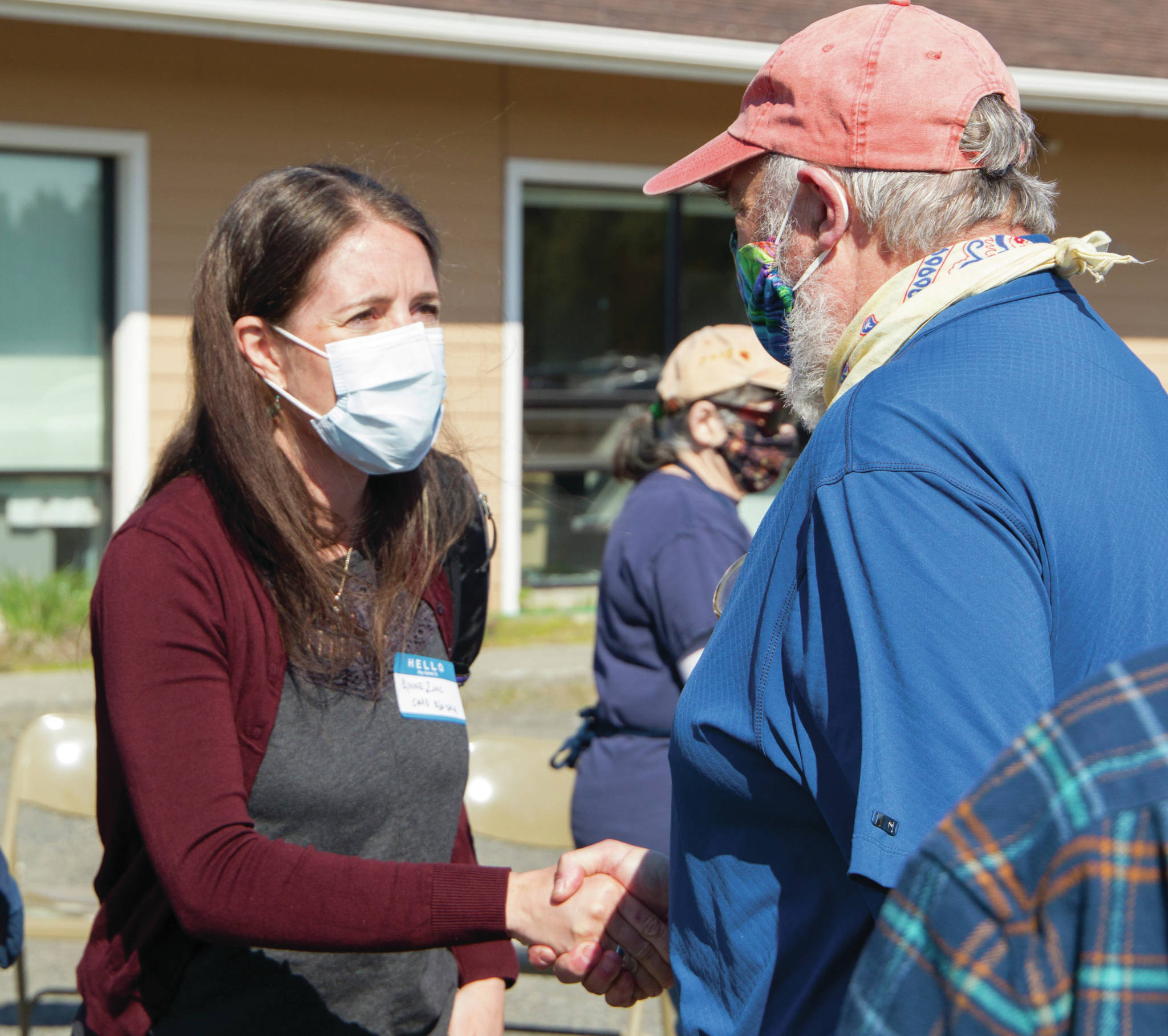By Dr. Anne Zink
There’s excitement in the air at our house and across Alaska. School is coming back. Backpacks, pencils, first-day outfits, plus the joy of meeting new teachers, reconnecting with old friends, starting a new year, a new beginning — these are memories that last a lifetime.
These past 18 months have been long and hard for all of us, and while everyone’s journey has been different, we all want COVID to be over. Some Alaskans have become sick, some have lost loved ones, some contracted COVID but were asymptomatic or barely ill, many lost or changed jobs, and many kids learned remotely all year while others were in person. Some children thrived; many others struggled. Despite these different experiences, one truth unites us — we all want our kids, our communities, our families and our friends to be healthy, well and thriving.
The early part of the summer provided a glimpse of better times. COVID cases plunged, vaccines were plentiful, more treatment options became available, testing was widespread, and hospitals had ample rooms for seriously ill patients. Then the COVID virus mutated, the delta variant exploded, cases surged, and reinfection and breakthrough cases occurred. Coupled with Alaska’s limited health care capacity and the constant pandemic-related stress and workforce shortages, our hospitals are now often stretched beyond capacity. This makes meeting standards of care for patients experiencing everything from strokes and trauma to cancer and other serious health issues much more challenging.
We now have effective tools to slow the spread of COVID-19, or at least to reduce its impact on an infected person; however, it takes each of us choosing every day to be healthy, well and supportive of each other to keep COVID at bay.
Here are five specific actions we can take to support our children with in-person learning this year:
Give each other space and grace. This has been hard on everyone, and we are all doing our best. Our children are watching us. Now is the time to treat each other with kindness and compassion.
Prioritize health, both mental and physical. Get outside and play, eat well, get plenty of rest, connect with others in your community and listen to children as they find their way through this ordeal as well.
Get vaccinated. This is our single most effective tool against the pandemic. It is free and widely available. At this point, we are all choosing between the virus and the disease, and while vaccines help protect us, they also help protect those who cannot yet get vaccinated, namely children under age 12. In addition, vaccinated individuals don’t need to quarantine if exposed to COVID, which keeps them in school, at work, and involved with sports and other activities so critical for their development.
Test. Often. Get tested as soon as COVID-like symptoms start. Consider testing before and after events or travel. Unvaccinated Alaskans and regularly exposed people should test even more frequently. Plan before you need to test about how you will do so when the time comes: Will you use an at-home test, visit a local testing site or a private medical office? Figure that out now. If you test positive, isolate immediately, and let your close contacts know. If you are in a high-risk category, consider receiving treatment with monoclonal antibodies to reduce your risk of hospitalization.
Use layered prevention such as masking, distancing and ventilation, especially now when cases are high and climbing. Per CDC guidelines, K-12 students who properly use masks won’t need to quarantine if exposed to COVID-19 in an indoor classroom. We know from experience that masking works; when kids used masks in schools last year very little transmission occurred. It is one thing to open schools; it is another to keep them open. Masking is a game changer for kids getting to learn in person.
It is true COVID does not affect children in the same way as adults, but it is still not an experience anyone wants to endure. Not to mention, our children are part of our community and live with parents, siblings, grandparents, or others, some of whom may be high risk. We have a shared responsibility to take practical safety measures to keep our children safe and healthy as well as in school where most students learn best. We have tools to keep ourselves and each other well, but we must use them.
In my years living and working in Alaska, I’ve seen firsthand the extraordinary community spirit Alaskans are famous for. Neighbors take care of each other, and no one is left behind. It is time to bring that same attitude to keeping our students in school this year, where they absolutely need to be.
Dr. Anne Zink, M.D., is a board-certified emergency physician and Alaska’s chief medical officer.

